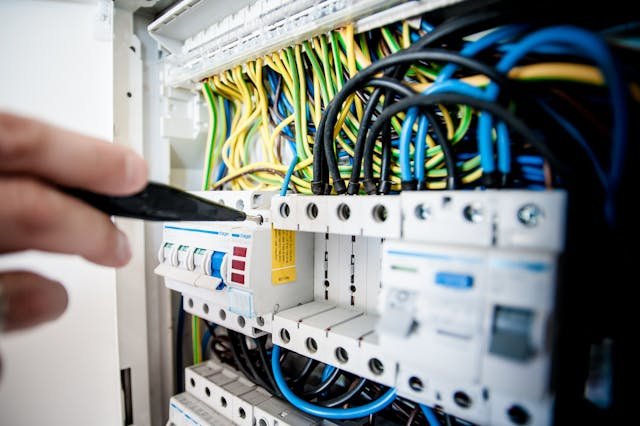Business network cabling is a critical aspect of a reliable and efficient IT infrastructure. Improper cabling leads to various issues that can affect performance and productivity. From poor planning to improper cable management, several common mistakes can have significant consequences. By understanding and avoiding these pitfalls, businesses can ensure their network cabling supports their operational needs effectively. Here are six common mistakes to avoid with business network cabling to help maintain a robust and efficient network.
1. Inadequate Planning and Design
One of the most common mistakes businesses make with network cabling is inadequate planning and design. Proper planning involves understanding the current and future needs of the organization, including the number of devices, network speed requirements, and potential expansion. Skimping on this step can lead to insufficient cabling infrastructure, causing connectivity issues and hindering future growth. Cabling and wiring services can create a well-thought-out design to ensure that the cabling system is scalable and can accommodate new technologies and increased data loads. Without proper design, businesses may face significant downtime during network failures or maintenance activities. Implementing a structured cabling system with appropriate redundancy can prevent such issues. Professional network designers and planners can help create a comprehensive cabling plan that meets both current and future requirements.
2. Using Substandard Materials
Another critical mistake is using substandard materials for network cabling. High-quality cables and components guarantee optimal network performance and longevity. Cheap or inferior cables can lead to signal loss, interference, and frequent failures. Investing in certified, high-quality cabling materials can significantly reduce these risks. Substandard connectors, patch panels, and other components can also degrade network performance. These elements help maintain signal integrity and overall system reliability. Source all materials from reputable manufacturers and ensure they meet industry standards.
3. Poor Cable Management
Poor cable management can lead to a host of problems in business networks. Disorganized cables can cause physical damage. It can also make troubleshooting and maintenance more difficult. Proper cable management practices, such as labeling, bundling, and using cable trays, can mitigate these issues and maintain a tidy and functional cabling system. Poor cable management can impact airflow and cooling in network equipment rooms, potentially leading to overheating and hardware failure. Properly routed and secured cables do not obstruct the airflow to maintain optimal operating conditions for network devices.
4. Ignoring Environmental Factors
Ignoring environmental factors is another common mistake that can adversely affect network cabling. Temperature, humidity, and physical hazards like water or chemical exposure can degrade cabling over time. High temperatures can cause cables to expand and contract, leading to physical stress and potential signal loss. Similarly, high humidity levels can lead to corrosion and degradation of cable materials. Installing cables in appropriate environments and using protective enclosures when necessary can mitigate these risks. Electromagnetic interference (EMI) from other electronic devices can disrupt network signals if not properly managed. Installing cables away from sources of EMI, such as power lines and heavy machinery, can help maintain signal integrity. Shielded cables and proper grounding techniques can also protect against interference.
5. Overlooking Future Expansion
Failing to account for future expansion is a mistake that can limit the scalability and flexibility of a network. Businesses often install cabling based solely on current needs, without considering potential growth. This can lead to the need for frequent upgrades and replacements, which are costly and disruptive. Future-proofing the network involves choosing cabling that supports higher data rates and emerging technologies. For example, opting for Category 6A or higher cabling can accommodate future bandwidth requirements and new standards. Planning for future expansion can provide long-term benefits and maintain the efficiency and effectiveness of the network infrastructure.
6. Inadequate Testing and Documentation
Inadequate testing and documentation are critical mistakes that can lead to undetected issues and difficulties in network management. Thorough testing of the cabling infrastructure during and after installation helps to identify and rectify any problems. Skipping this step can result in hidden faults that may cause intermittent connectivity issues and degraded performance. Proper testing equipment and protocols ensure that the cabling meets performance standards and functions correctly. Detailed records of cable routes, connections, and configurations can significantly aid in troubleshooting and future modifications. Without proper documentation, identifying and resolving issues can be time-consuming and error-prone.
Conclusion
Proper network cabling enhances the performance and reliability of a business’s IT infrastructure. By avoiding common mistakes, businesses can ensure a robust and efficient network. Invest time and resources into planning and maintaining the cabling infrastructure. Doing so can prevent many issues and support the long-term success of the organization. By understanding these pitfalls and implementing best practices, businesses can optimize their network cabling and enhance overall operational efficiency.

